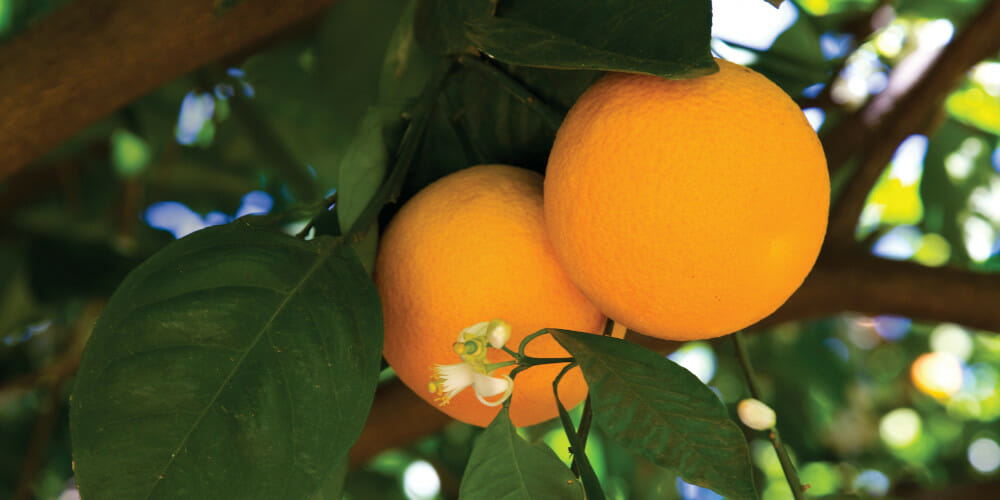“You must water it every day. No exceptions. It will thrive on your loving care.”

This story begins in the United States, at Battle Creek College in 1895. Harry Anderson* was a student at Battle Creek, studying to be a teacher and preacher, maybe even a missionary. He was also in love with Nora, a brilliant young woman who shared his dream of mission service. Both had been raised on large farms.
The opportunity came sooner than the couple had dreamed possible. Ten weeks before graduation the General Conference asked Harry and Nora to leave “immediately” for Africa, where they would be working at Solusi, a new school in Rhodesia, the country now known as Zimbabwe.
The Andersons tried unsuccessfully to get church leaders to delay their trip until after graduation. “There must be a farm at the school,” the mission director said, “and you need to be there to get it started.”
On a cold March morning they began their long journey to Capetown, South Africa.
The Andersons joined two other missionary families at Solusi and began building classrooms, preparing land, planting crops, and learning the language. It was hard work in an unforgiving climate. When the other missionary families became ill and had to leave the school, the General Conference sent replacement families. Those families quickly returned home after contracting malaria and other tropical diseases. The school cemetery soon had several tombstones marking the sacrifices of these missionary families.
* * *
Eight years later, with Solusi now filled with eager students, the Andersons were asked to move to northern Rhodesia (now Zambia) and start another school there. Harry Anderson began a four-month journey, walking north, searching for the perfect land. “It must be near a large population center,” he said. “It must have a clear and pure artesian spring. It must have much flat land with rich soil that will support citrus, wheat, and many other crops. And it must be near the railway.”
It took much searching until finally Anderson negotiated with Monze, chief of the Batonga people, for 5,000 acres of land in a place he called Rusangu. A year later, with a cart pulled by 16 oxen, Harry Anderson, his wife, Nora, and their young daughter, Naomi, camped next to the Rusangu spring.
“This,” Anderson told them again, “is the best spring in Africa.”
The family slept in their canvas tent that night. In the morning Anderson opened the tent flap and saw a tall African man standing beside a tree looking at him.
Anderson spoke English, and had learned to speak Sentebale at Solusi. But this man did not speak English, and knew only a few words of Sentebale. Chitonga was his language, and he spoke it with many signs, trying hard to speak so the teacher would understand.
“Are you the teacher?”
“Yes.”
“Then teach me. I have come to school.”
Anderson tried to explain that he needed to build a house and schoolrooms, and that he needed to clear some land for his orange trees. But the man did not understand.
“Teach me now” was all Anderson heard.
The next morning there were more men, standing by the spring, asking for the teacher to teach them—now.
Nora Anderson solved the problem.
“Harry,” she smiled, “didn’t we come here to start a school?”
That day Teacher Anderson took the men with him into the forest and began cutting timber for the school buildings, tables, beds, and desks. In the hot afternoons they sat beneath a tree and studied languages and Scripture together.
Two years later Rusangu’s classrooms were filled with students, the farm fields were ripe with grain, and a grove of small orange trees was producing its first oranges.
One afternoon as Anderson was returning home from teaching a Bible class, 10 strange men approached him near the orange grove. By now the Andersons all spoke Chitonga and Sentebale, and with a little bit of English conversations were much less work.
“Give us oranges,” the men said.
“I cannot give you each an orange,” Anderson answered. “There is only one orange left from this year’s crop. But if you come to my house tomorrow afternoon, I will give you something better than an orange.”
* * *
The next afternoon all 10 men were waiting for Horticulturist Anderson beside the orange grove. Greeting them, Teacher Anderson reached into his pack and brought out one orange and a pocketknife. Carefully he peeled the orange and divided it into sections, just enough for each man to taste one small section of orange.
You should have heard the lip-smackings as each man made sure every drop of juice made it to his flavor buds!
When the orange was gone, Anderson invited the men to his house to receive their special gift. “This is far better than an orange,” he told them.
At the Anderson home each of the men was given a small orange tree, tall enough to be planted in the grove but small enough to fit into their hands.
“This is an orange tree,” said the teacher. “I will show you where to plant it in the grove. I will help you plant it. Then I will show you how to care for it. If you follow my directions and care for it well every day, your tree will give you at least one orange next year.”
The men were overwhelmed with the incredible gift. They followed Anderson to the grove and carefully followed his directions for preparing the ground, adding the fish fertilizer, and watering the small tree.
“You must water it every day,” Anderson told them. “No exceptions. It will thrive on your loving care.”
The men planted their trees and returned to their homes. The next day each man brought his family to Rusangu to see their orange tree and to make sure it was cared for perfectly. Day after day they came, caring for their trees and learning about God.
I stood in front of Harry Anderson’s house one day, sharing cool shade with Life Mutaka, director of education for the Southern Zambia Union Conference, and member of the board for one of the largest Adventist universities in the world: Rusangu Adventist University.
“My grandfather was one of those 10 men,” smiled Mutaka. “This is where he met Jesus, and a fresh orange is still my favorite flavor.”
*William Harrison “Harry” Anderson (the missionary) should not be confused with Joseph Harry Anderson (the artist).







